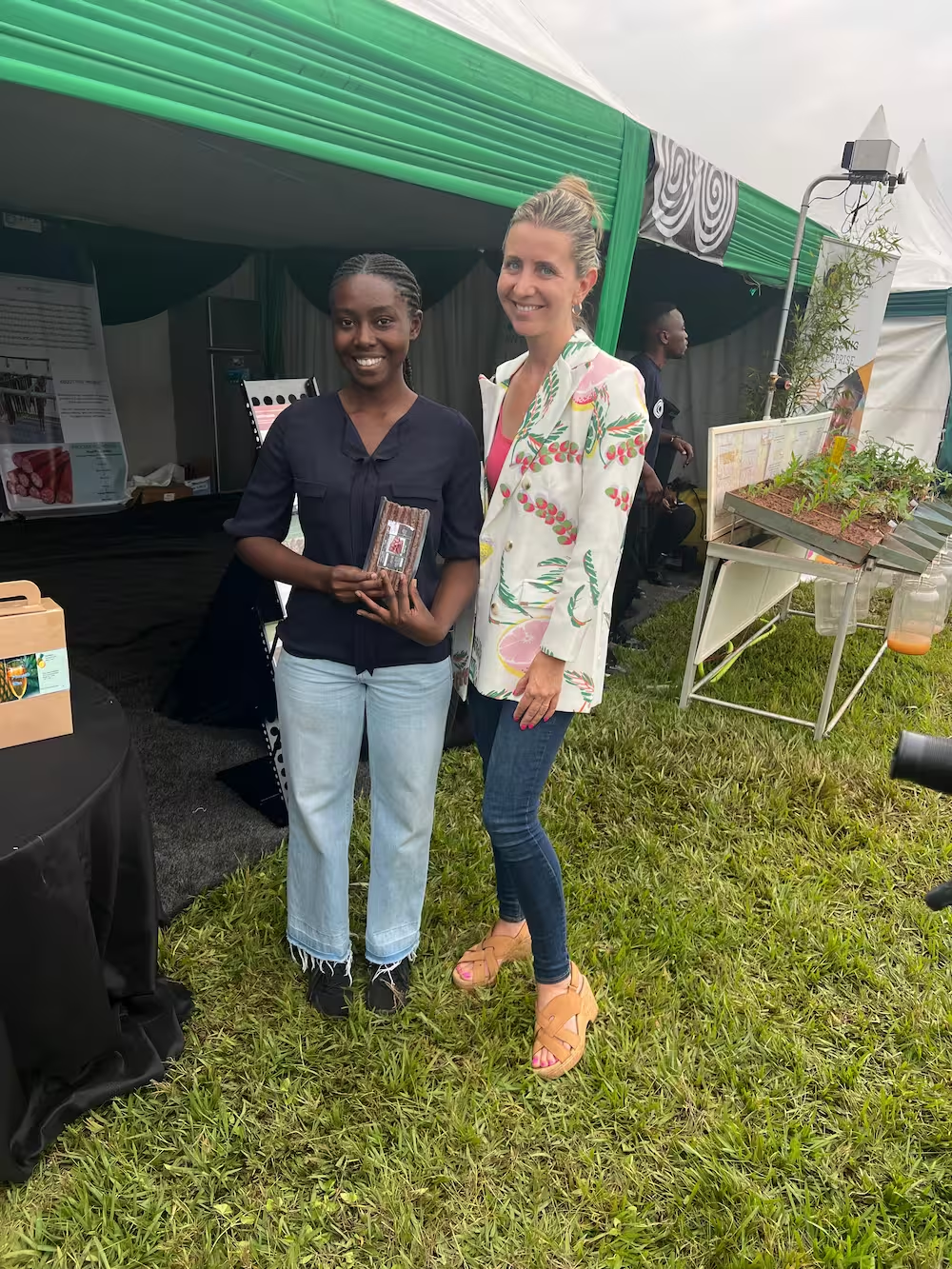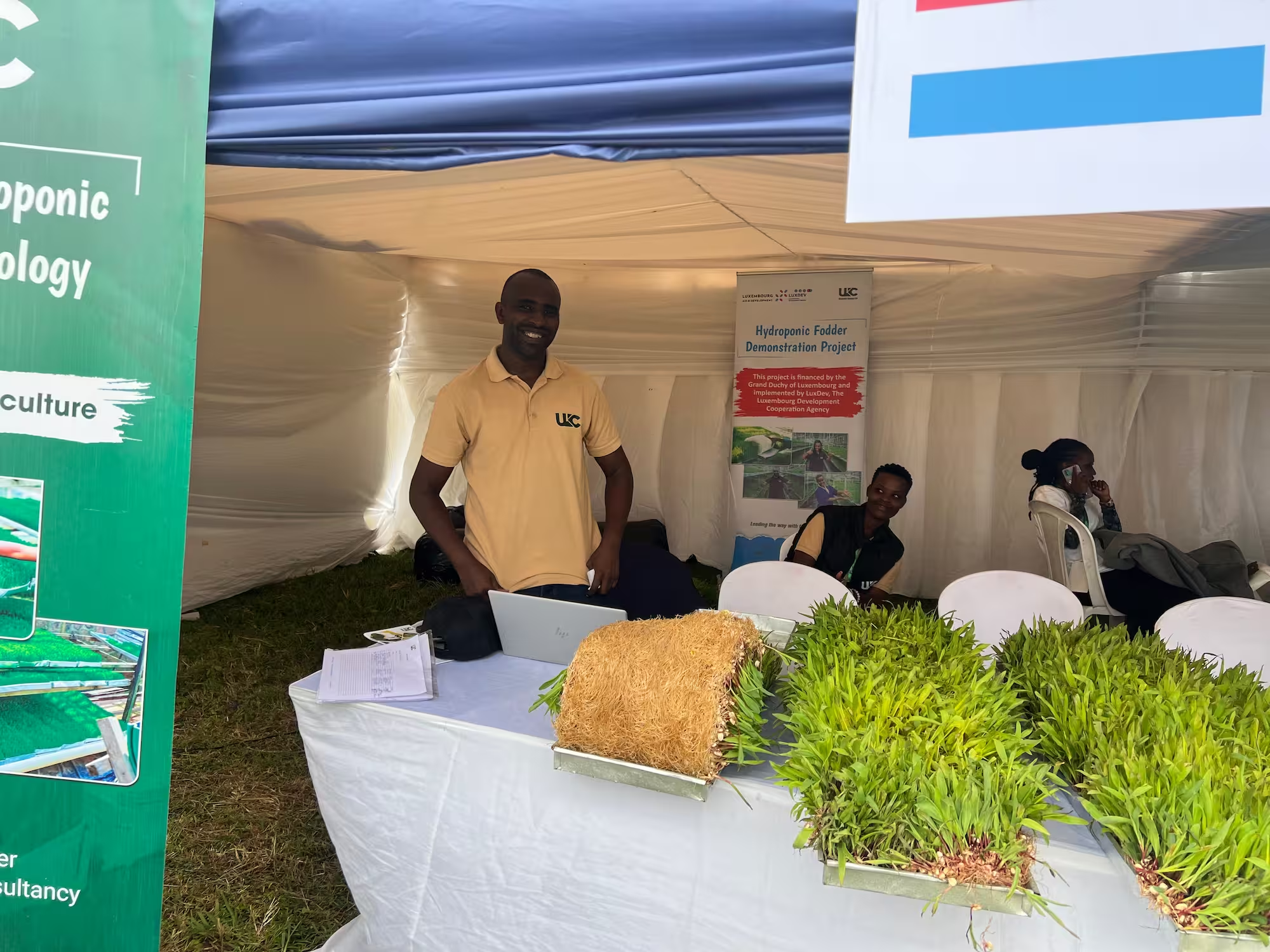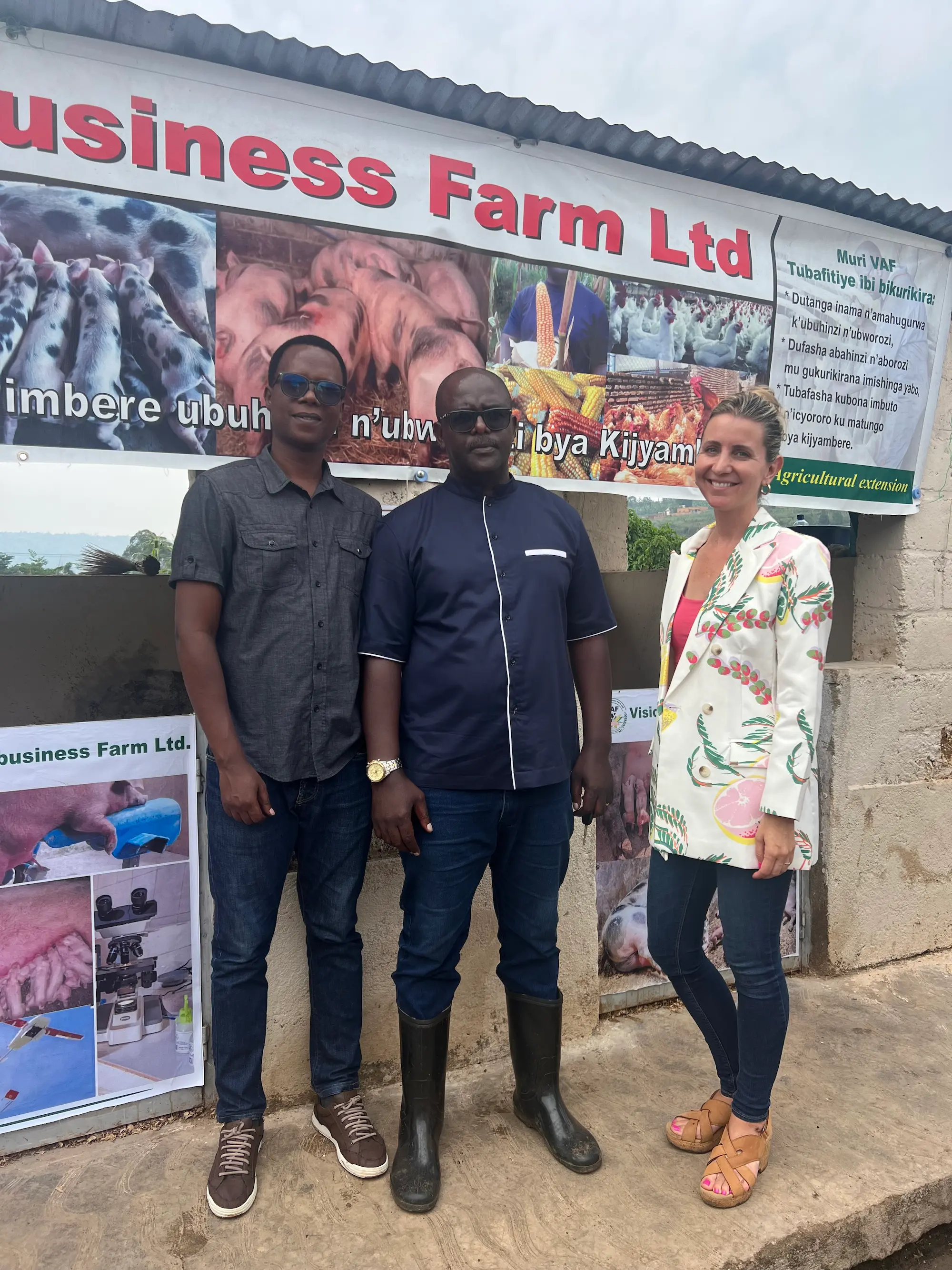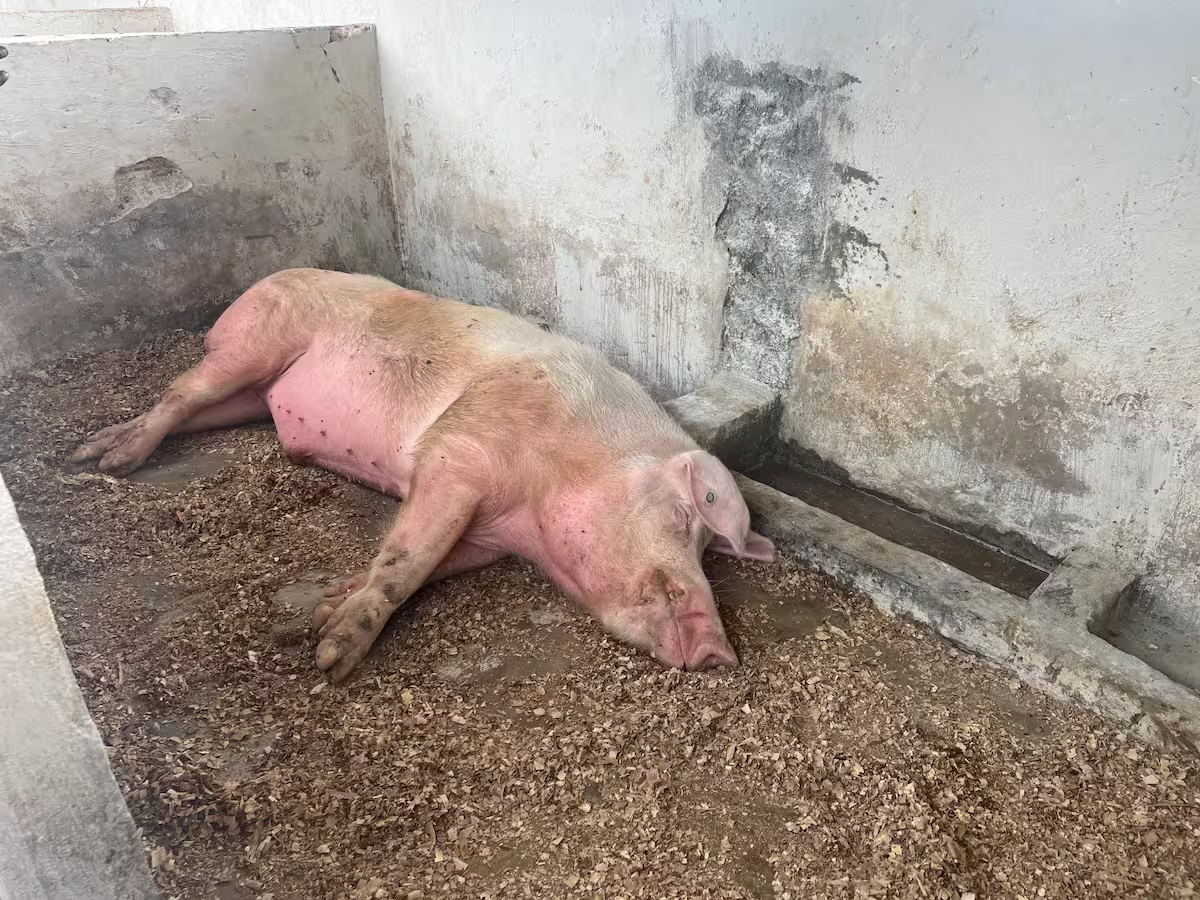Last week in Kigali was a full-on showcase of agri-innovation and momentum at the 18th Rwanda Agriculture Show, held at the Mulindi show grounds. Imagine the vibe of an American summer fair — minus the games and cotton candy — but with the hum of livestock, bustling booths, and buzzing conversations about transformation in Rwanda’s food systems.
Here are three standout highlights:
The Rwanda Institute for Conservation Agriculture (RICA) stole the show with its hands-on display and inspiring student innovators. One standout was SIFA Jeanne, pioneering a meat-processing and pork fermentation project that turns pork into pork sticks that stay safe and delicious without refrigeration. In East Africa, that’s massive: a ready-to-eat, protein-rich snack that doesn’t need cold chains. We’re excited to follow Jeanne’s journey as she wraps up her studies this summer and brings her big idea to market.

We connected with Jackson of UKC Rwanda (Uruhimbi Kageyo Cooperative), who’s leading the charge on hydroponic fodder technology. Their vertical, soilless systems churn out nutritious greens for livestock — making pig fattening more sustainable and cost-effective. We're eager to pilot this technology with rural farmers in Uganda soon: imagine low-cost, high-yield feed that brings pigs faster to market weight. Game changer.

We toured the heart of Rwanda’s swine innovation — meeting breeders, feed suppliers, and impressive sows and boars. From genetic lines to nutritional blends, the show featured key players in local breeding and corn-feed production, many of whom are driving national standards in pork quality and safety. The swine pavilion reinforced the notion that sometimes in-person visits lead to the most powerful partnerships.

The Rwanda Agriculture Show felt less like a typical expo and more like a convergence of purpose — veteran institutes, tech innovators, agritech SMEs, and vibrant youth all pushing the same agenda: feed supply, animal nutrition, and local food-security innovations. From SIFA Jeanne’s portable pork sticks to Jackson’s hydroponic fodder systems, innovation isn’t just conceptual — it’s being field-tested and scaled.
Now comes the real work: connecting, piloting, refining, and expanding these ideas across borders — especially into Uganda — to build impact that really moves the needle in rural communities.
